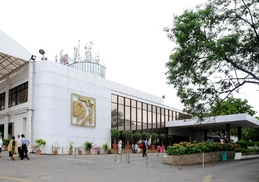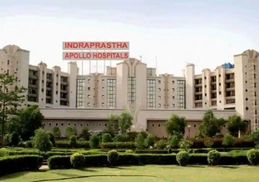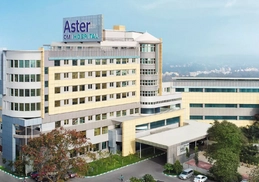
+91 8095511877

+91 8095511877
Bone Marrow Transplant(BMT) or Stem Cell Transplantation (SCT) is a procedure in which healthy bone marrow stem cells or peripheral blood stem cells replace your diseased or damaged bone marrow. BMT/ SCT is sometimes the only option if you have issues with your existing bone marrow. These issues could be due to conditions like leukemia, lymphoma, myeloma, other blood disorders like thalassemia, etc. You may have these issues due to some diseases
Bone marrow is the soft, spongy, and fatty tissues that you have inside your bones. There are stem cells in these bone marrow tissues, which produce blood cells.
In a healthy body, the stem cells in the bone marrow produce more than 3.5 million blood cells and platelets every second. These stem cells develop into
Healthy bone marrow and blood cells are essential for you to survive and be healthy. When the bone marrow is damaged or destroyed, it can no longer produce the stem cells. It results in anemia, weakness, infections, excessive bleeding, and sometimes even death.
A BMT or SCT can cure many diseases, mainly a few types of cancers. It helps to
It thus helps in direct treatments, preventing further occurrences of cancer and recovery after other treatment methods.
A bone marrow transplant is an ideal treatment option for many diseases. In some cases, it is the only option. Some of the conditions which can be treated by BMT are
There are two types of bone marrow transplants, which are
The disease for which you need the treatment determines the type of transplant.
In an autologous stem cell transplant, the healthy bone marrow will be taken from your own body to replace the damaged cells. It is an option in those cases where your body produces healthy bone marrow.
It is most often the treatment choice for the following diseases like
In these cases, you will have BMT after chemotherapy or radiation treatments. These treatments will destroy or damage your bone marrow. So, the doctors will first harvest your healthy bone marrow cells before these treatments. They will be frozen and stored for use in the transplant after the completion of chemotherapy or radiation treatment.This type is a relatively safe one as there are no risks with donor matching for transplant.
An allogeneic transplant uses bone marrow cells from a healthy donor to replace your bone marrow. The donor may be from your sibling(which is ideal), parents, or someone not related to you.
The doctors will collect healthy stem cells or bone marrow cells from the donor's blood or bone marrow. It can also be from a donated umbilical cord. The donor can be a sibling, other related, or unrelated individual.
An allogeneic transplant is the main choice for cases like
In all these cases, you will have chemotherapy or other treatments like radiation to kill the cancer cells. You will have the BMT procedure as the second phase of your treatment.
BMT is a total team effort in any hospital. It takes a team of doctors, nurses, technicians, and others for a successful BMT procedure. It includes a team of experts like
The team will first do an extensive evaluation of you and the donor (where applicable) to ensure that both are ready for the transplant.
Pre-procedural steps
The team of doctors will do a detailed evaluation and check your medical history. They will ask for blood tests and organ function tests to check the function of your heart, lungs, kidney, and liver. These tests are important for the doctors to assess your condition and readiness for the BMT.
In the case of allogeneic transplants, your donor will also need to go for few tests. These tests are to check the general health, resistance to infections, and any exposure to viruses.
Donor matching process
A donor can be within your family or from outside. It is best to have a donor from your immediate family and that too a sibling where possible. The donor's tissue type should match with your type. This process is HLA matching.
HLA stands for human leukocyte antigen, a protein marker that helps your immune system distinguish between your own body cells and cells from foreign bodies like viruses.
There are antigens on the surface of these white blood cells, which helps in HLA matching. These HLAs reside on chromosome6 in your body.
While there are more than 100 antigens, only a few major ones affect the matching. The more the number of matches, the better it will be for the success of the BMT.
As we inherit one copy of chromosome 6 from each parent, a sibling has the best chance of having matched HLA type. In fact, there is a 25% chance of having the best match with your brother or sister.
Stem cell collection process
There are two main ways of collecting stem cells
1. Peripheral blood stem cells: In this, the stem cells will be from the donor's blood cells. The doctor will insert two needles in the veins of both arms of the donor. These needles will have a connection to a separator machine. Apheresis is the name of this process.
Blood flows out of the donor through one needle in one of the arms to the machine. The machine then separates the stem cells from the blood. The remaining blood gets back to the donor through the needle on the other arm.
There may be many such sessions to collect the needed amount of stem cells.
2. Bone marrow harvesting: It involves collecting stem cells from the donor's bone marrow using a needle. The hip bones are the most common location for collecting bone marrows. The donor will be under anesthesia during the process and so will not feel any pain.
You will need to be in the hospital a few days before the transplant for the pre-transplant workup. The days before the procedure are for the tests and evaluations.
During this time, the doctor will implant a tube (IV catheter) into a large vein near the chest or neck area. This tube (also known as the central line) will be there during the procedure. The doctors will use this central line to infuse the healthy stem cells into your body.
The infused healthy stem cells travel through your blood to your bone marrow. They will have to start producing new blood cells for the transplant to be successful. This process, known as engraftment, may take 15-30 days. You may need blood transfusions until this time.
You will have blood tests during this period. It helps to monitor your condition and to check for any infections.
If you had stem cells from a donor, you need to have medicines. It is to
Apart from these medicines, you will also have to make some changes to your diet and lifestyle. The advice from the doctors and the dieticians include steps such as to
A BMT is a procedure that has some risks with it. While some people will not experience any problems, others can have issues that can even be life-threatening.
Some of the common problems after BMT are
A BMT can be a very good cure for many diseases. The prognosis depends on many factors like
The results of BMT can vary from person to person. One needs to have follow-up care after transplant for the best results


This article has been reviewed for medical correctness and relevance by
Dr Niti Raizada
Dr. Niti Raizada is a senior Medical Oncologist with over fifteen years of experience in the field. Dr Niti has special interests in the areas of Thoracic, Gastrointestinal, Breast, Gynaecological Oncology, and Bone Marrow Transplants. She did her MBBS at Gandhi Medical College, Bhopal; MD-General Medicine at G R Medical College, Gwalior, DNB-General Medicine from National Board Of Examination,DM from Adyar Cancer Institute Chennai and Fellowship in Hematology from Hammersmith Hospital and Imperial College,London. She is a member of American Society of Clinical Oncology,USA; Royal College of Physicians,Edinburgh,UK; Member of Pharmacy Committee,Member of DNB teaching program in Medical Oncology and European Society of Medical Oncology (ESMO).

Apollo Chennai

Apollo Health City

Apollo Indraprastha

Aster CMI

BLK Hospital

Dharamshila Narayana
Frequently Asked Questions
Is there a difference between stem cell transplant and bone marrow transplant?
What are the main types of bone marrow transplants?
What are the risks of being a bone marrow donor?
What is the cost of bone marrow transplant in India?